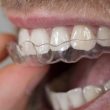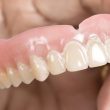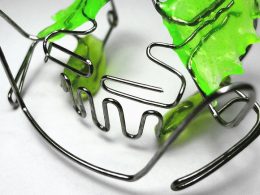Table of Contents
If you are already an Orthodontic patient at DENTAL VIP, you are probably quite familiar with your appliances and how they work. We always dedicate the necessary time so that everyone can understand the process and take an active part in the progress of their treatment.
Before installing the braces, we provide very precise information including: how often the appliances should be adjusted, what foods to avoid, how to care for teeth, braces and gums, what results can be expected from Orthodontic treatment and the estimated amount of time required for its completion.
But, what about the biomechanics that are involved in the process of moving teeth into their correct positions? Knowing more about how force systems are applied to align the teeth and jaws, can provide a deeper understanding of what happens behind the scene, while achieving an increasingly healthy and beautiful smile.
Let us take a closer look at how fixed appliances work, what are their components, how they manage to move the teeth and bring them to the desired position!
Components of Fixed Appliances
Orthodontic appliances require many components and active parts to achieve successful tooth movement, and the following are some of the most important:
- Bands and Tubes The tubes, so to speak, are the brackets of the molar teeth. The bands are stainless steel rings that surround the dental piece providing great anchorage and retention.
- Brackets Brackets, also known as braces, are the therapeutic devices used by the Orthodontist to be able to apply forces on the teeth. They can be made of steel, gold, porcelain or sapphire; and are temporarily bonded to the teeth to achieve the correction of the different malocclusions, in which the teeth and/or jaws are poorly positioned.
- Archwires They are used to generate controlled forces. They can be made of steel and other special alloys that provide greater elasticity and resilience. The archwires are the ones that do most of the work in an Orthodontic treatment.
- Elastic Ligatures They are small circular modules of latex or silicone that are used to fix the wires to the brackets and they come in many colors to provide a touch of fun to the treatment.
- Metal Ligatures They are small pieces of very thin wire that can be used to fix wires, tie teeth, consolidate sections and conserve spaces.
- Elastic Chains Orthodontic chains are a complement to the fixed appliance that the professional hooks on the brackets. These are elastic ligatures that are joined together to form a chain. This elastic chain allows the Orthodontist to cover several teeth at the same time and perform the necessary dental movements.
- Coil Springs The coil springs are intended to be used compressed to open spaces or to move teeth in a certain direction, or stretched, to move one or more teeth taking advantage of the elastic recovery of the element.
- Intermaxillary Elastics These are rubber bands that are attached to both jaws and serve to move teeth, correct dental occlusion and improve the interdigitation between both arches.
In summary we can say that the wires, the elastics and the springs are the ones that generate the forces; and the bands, tubes and brackets which transmit them to the teeth. All of these components work together to exert a constant pressure on the teeth. It is this pressure that will gradually move them to their ideal positions throughout the treatment.
Now that you know the different components of fixed appliances, let us talk about how teeth move!
Bone Remodeling and Tooth Displacement
To better understand how braces work, it helps to have some knowledge of periodontal histology. The teeth are externally surrounded by a soft tissue called the gingiva, and internally (at the root level) by a periodontal membrane or ligament. Below them is the alveolar bone, which is the portion of the jaw that houses all the teeth.
Simply, the teeth move because, when forces are applied to them; the bone is remodeled.
The mechanical forces applied to the dental roots and transmitted to the periodontal tissues that surround the tooth, initiate a remodeling activity that facilitates the movement of the teeth through the bone. Traditionally, this mechanism has been explained by the pressure-tension hypothesis, in which bone is reabsorbed in areas subject to pressure and is deposited (new bone is formed) in areas of tension.
These phenomena of bone resorption and apposition are activated by biochemical reactions at the level of the cells of the bone and periodontal ligament, in response to the pressure and tension stimuli generated by the archwires, elastics, springs and other active components of the device.
Although the biology of orthodontic tooth movement is extremely complex and still debated today, we can conclude that the concept of tooth movement comprises three main phases: pressure and tension in the periodontal ligament that causes alterations in blood flow, formation or release of chemical mediators and cellular activation, thanks to the collection of cells called osteoclasts and osteoblasts that form and remodel all of our bones throughout life.
The Force Behind the Movement
Brackets, archwires and elastics deserve full credit for providing and transmitting the forces and pressures necessary to achieve controlled tooth movement.
As we have already said, the archwires are the ones that do most of the work, and there is a huge variety of them in relation to their material composition, gauge and shape of their cross section.
Although only an Orthodontic Specialist can know the indication and the precise moment to use each arch, it is important to know that they can be round, square or rectangular; and that they can be made of steel, nickel-titanium (Ni-Ti), titanium-molybdenum (TMA) and other miscellaneous alloys.
As a general rule, treatments start with thin and highly elastic arches, to be able to reach all the teeth in malposition and at the same time, release light and biocompatible forces.
As treatment progresses and teeth are straightened, thicker and stiffer arches are placed to fine-tune dental positions and achieve tilt details.
Intermaxillary elastics can be used at any stage of the treatment, however, their most frequent use is towards the end of it, to correct the relationship between both arches (upper and lower) and achieve adequate dental engagement (occlusion).
Bracket Design and Components
The basic parts of a bracket are the base, the slot, the fins and some have a hook.
The base is the area of the bracket that comes into contact with the tooth and is used to bond it to it. The slot is the area where the archwire is inserted. The fins have the function of receiving and holding the ligatures to keep the main archwire in position. Some brackets have a hook, which is shaped like an antenna and is used to hold intra and intermaxillary elastics.
Depending on their manufacturing process, metal brackets can be cast or welded. Castings are made by melting metal which is then poured into a mold, resulting in a single piece of metal, which is usually of better quality. In the soldiers, the parts are manufactured separately and then welded, with the disadvantage that they can be detached occasionally.
Of course, there are also cosmetic brackets made of porcelain or sapphire crystals, which contain the same structural elements or components already described.
Preadjusted Brackets and Straight Wire Technique
The straight wire technique (SWA) devised by Dr. Andrews and perfected by Dr. Ronald Roth, consists of placing the teeth in an ideal position through straight arches that fill the slot of the bracket. At the same time, it provides inclination, rotation, torsion and in-out position of each tooth within the occlusal plane.
Traditionally, the practice of Orthodontics has been based on the making of bends within the archwires to fine-tune the dental positions in the completion or finishing phase. However, today there are “automatic brackets” that already have the information within them to make the teeth look perfectly aligned and characterized.
This information comes within the slot or the base of the brackets, which makes the use of the straight wire technique a great advantage in the practice of daily clinical Orthodontics.
Although it may seem something banal or of little importance, the opposite happens. Straightening and aligning the teeth is only the first phase of an Orthodontic treatment. Then, comes the complicated thing, which consists of achieving the details and characterizations that truly make the difference.
To really look beautiful, the teeth should never just be aligned like the keys on a piano. Each of them must be left with a specific anteroposterior and transverse inclination (as far as possible) and individualized, which provides naturalness and personality to the smile.
That is why in some people after Orthodontics the teeth look really beautiful, and in others, simply straight.
“Brackets or Fixed Appliances Generate Complex Systems of Forces that Press and Move the Teeth Towards Their Correct Positions”.
DENTAL TIP
We Are Just One Step Away!
Globalization and dental tourism are two extraordinary tools for accessing world-class Dentistry. Currently millions of people travel to other countries in search of opportunities and prices that allow them to face their dental treatments and recover their smile.
Wherever you are, generally in just a few hours you will be able to get to Venezuela, move to a comfortable hotel and start your oral rehabilitation process with dental implants, porcelain veneers and 100% metal-free ceramic structures; at only a fraction of the cost you would have to pay in your home country.
Almost certainly traveling or not traveling will mean the difference between satisfaction and resignation, or at best; between just getting “something” or be able to reach “the best option”. At DENTAL VIP we are very good hosts and excellent professionals.
Contact us and ascertain how traveling to Venezuela can improve your self-esteem and quality of life!












